To the End
Leaving Syracuse meant half a day on the Erie Canal path, then half a day up into the hills. For the rest of the ride, I’d be in a touristy area most of the time, beginning here in the Adirondacks. At one point in New York, I saw resorts called Pioneer Town and Frontier Village. If New York is your idea of the frontier, you don’t get out much.
A WarmShowers guest I’d contacted in the area wasn’t home to host me, but they also had a weekend getaway cabin and gave me the door code so I could stay there myself. For only the second time this summer, I was able to wash all my clothes, since that requires either borrowing clothes (as I’d done once before) or simply going naked for a few hours, as I did now.
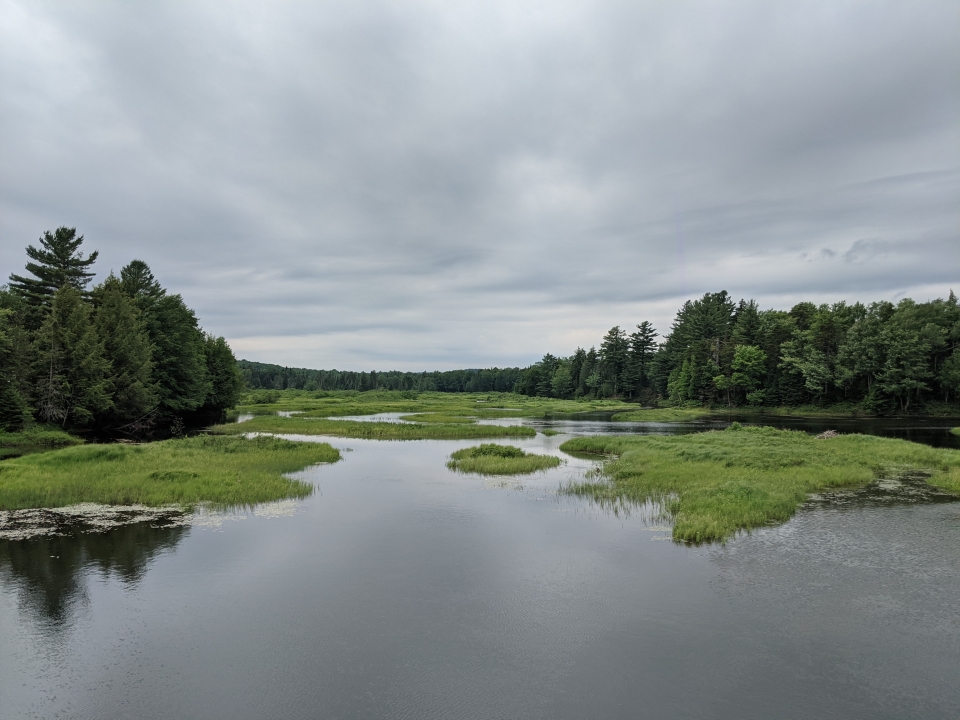
The hills in the northeast are cloudy, cold, and often wet, even in summer. This was equally true on my previous visit to the region on the Appalachian Trail. One day, the temperature reached the 90s in Fahrenheit, but also managed to rain three separate times, and did so enough to make you cold. It’s like the northeast is competing with itself to see how terrible its weather can be. I’ve resolved to never visit again.
I managed to make it from New York, all the way across Vermont, and into New Hampshire all in the same day. The states up here are the size of counties. Once in New Hampshire, the campsite for which I was looking turned out to not exist. Instead, I had to push on another 25 km to the next one, with 175 km already behind me. Naturally, it rained again in the additional hour it took to get there.
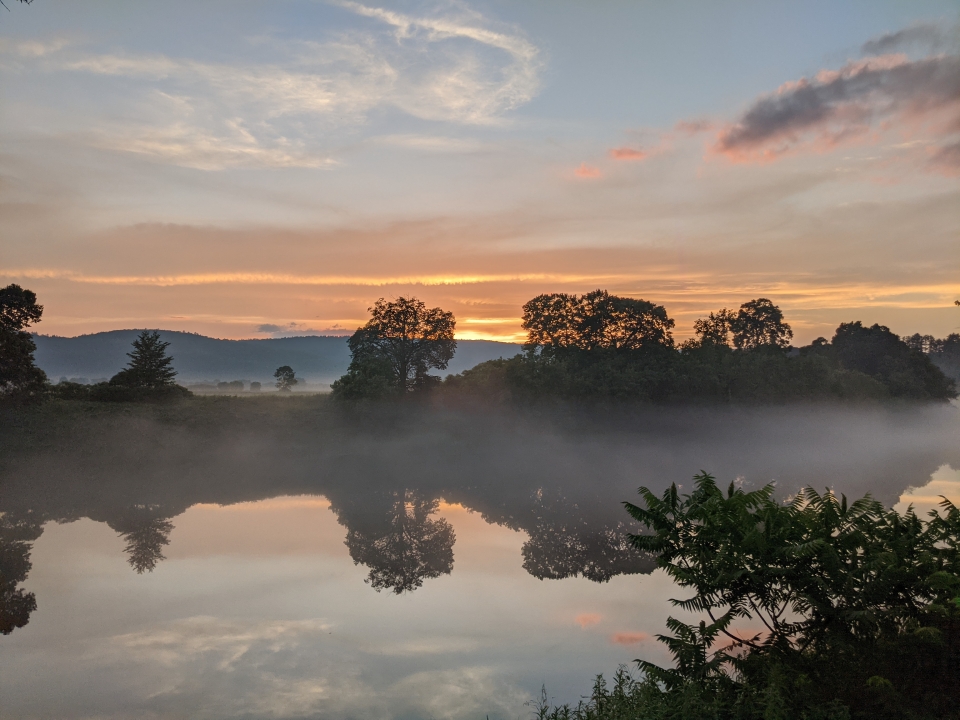
Starting somewhere in the Adirondacks, I was on Adventure Cycling’s Northern Tier Route the rest of the way. One might think that would mean I’d meet lots of touring cyclists doing this popular route, but I met almost none. A shame, because that was the best part about riding on the Trans-Am Route in Colorado and Kansas; not only do you get to meet people, but they give you advice when it comes to finding places to stay. I’ve grown to hate the daily ritual of wandering around town and begging for the privilege of lying still for a few hours.
For whatever reason, the roads in Vermont, New Hampshire, and Maine were constantly busy, and it should be noted I was never on main highways. The route was exclusively made up of side roads, and the largest towns along the way had only a few thousand people; most had only a few hundred. On any given day, I probably encountered 10 times as many cars as I did houses. Who are all these people? Where are they coming from? Where are they going? You got the idea the entire state of Vermont spent all day driving around, like it was their occupation.
The northeastern “ee-yah, oo-wah” accent is my nails on a chalkboard. It appears to be at its worst in New Hampshire.
“It’s goo-wah-geous up they-yah!”
DIE.
For days, people asked if I’d be riding the Kancamangus Highway in New Hampshire. How am I supposed to know the name of every road in New Hampshire? That’s about as likely as knowing the name of every road in one particular county in Montana. Either one is roughly equally far away from where I live, and if anything, the county in Montana is of more significant size. After a while, I learned to simply answer “Yes” every time someone asked about a road with a funny name. One day, I tried telling someone where I was going and mistakenly called it the Cucamonga.
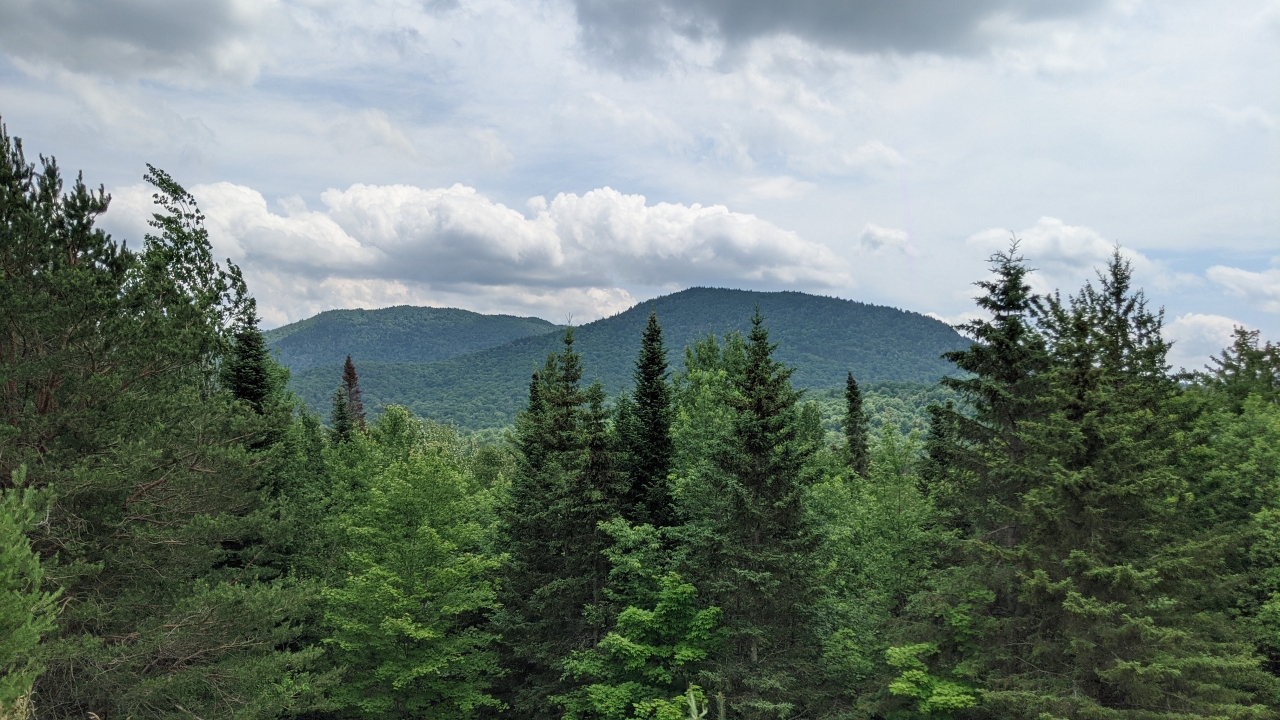
Starting all the way back in Pennsylvania, people have warned me about the hills. It wasn’t until the Adirondacks I saw anything significant, and even that wasn’t terrible. A full day in the Adirondacks has about as much climbing as my normal weekend route in Texas Hill Country. The Kancamangus, which was the signature hill of the entire tour, reaches a maximum elevation of only 850 m, took just over an hour to climb, and the lowest gear I used was my 4th. The hills here simply don’t compare to the west.
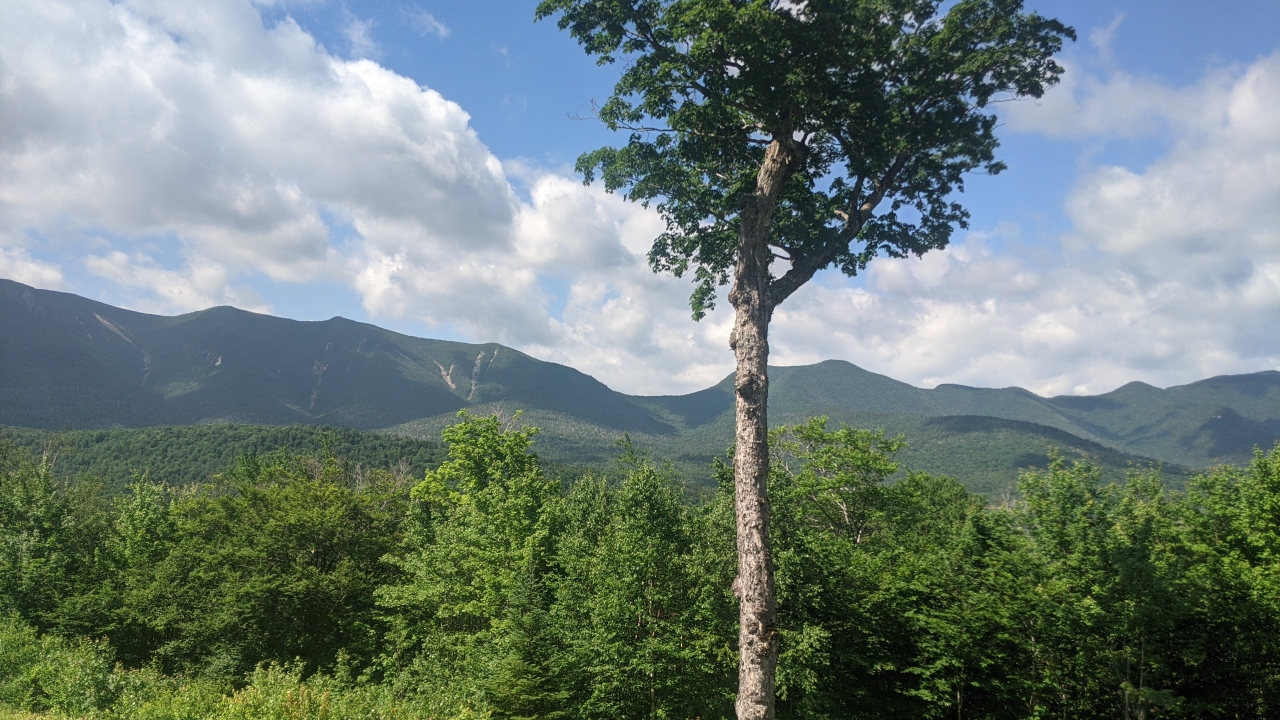
And then there was Maine. The hills aren’t big at all, but there are a lot of them, and some are steep. The lowest gear I used on the entire tour was my 2nd, in Maine. Riding in Maine is an exercise in doing hill repeats all day. You get tired of downhills, because you know you’re only going to be going uphill again.
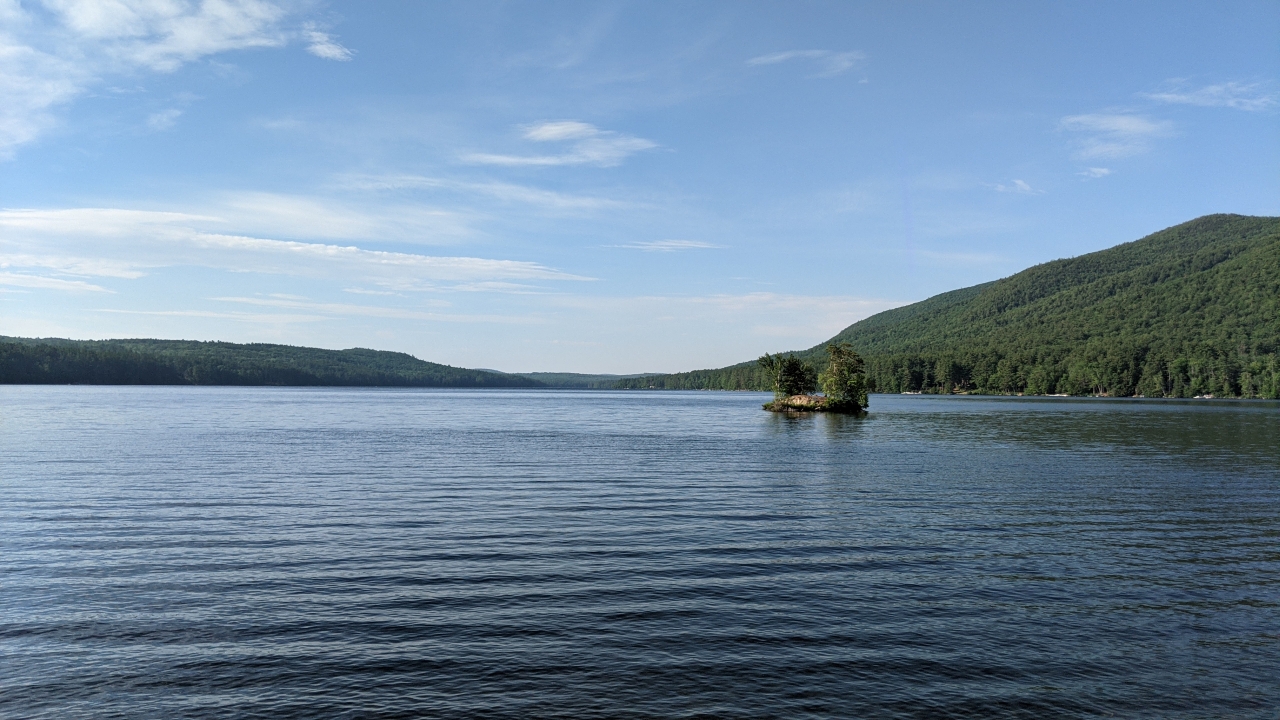
Brunswick and Belfast, the last two days before Acadia, both had WarmShowers hosts, a good way to end the ride. Glen and Pam in Brunswick were experienced touring cyclists who might’ve talked me into getting a suspension seatpost. The two of them plan on doing the Southern Tier coast-to-coast route this fall, which takes them right through Texas Hill Country. I hope they look me up when they do, so I can repay the favor.
Andrew in Belfast lives with his elderly mom and spends time volunteering to take care of other seniors as well. He and some of his friends, most of whom also have aging parents, have plans to make a small business that provides in-home senior care.
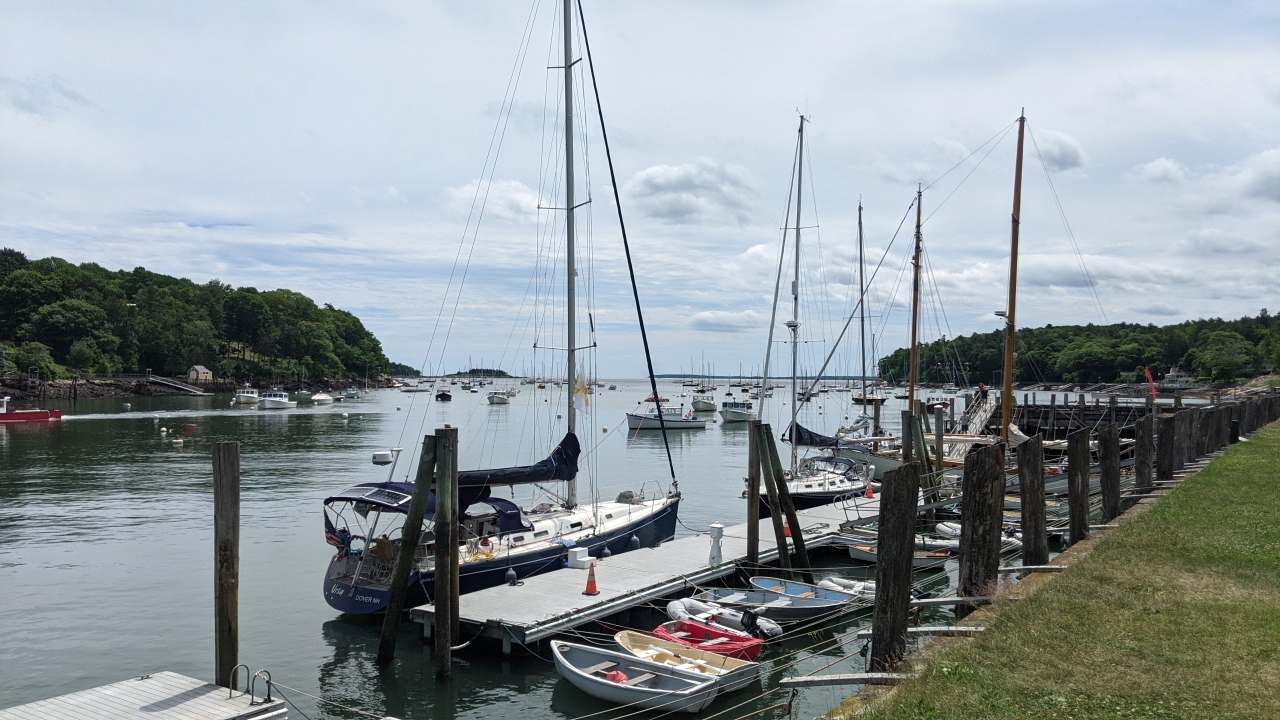
The very last day into Acadia was relatively short and it was raining all morning, so I waited until about 10:00 AM to get going, as opposed to my usual 6:30. It still rained off and on all day, never much at a time. The rain was never strong enough to get you all the way wet, but never stopped long enough to get all the way dry. It was the first day that the jacket never came off.
I stopped in Ellsworth, the town closest to Acadia, looking for a box in which I could pack Valeria for the flight home. As it turned out, neither of the sporting goods stores sell bikes, and Wal-Mart only had boxes for kids bikes. Instead, I wound up having to pick up a box days later, on the way to the airport in Bangor.
My hosts in Lamoine, which is just across the water from Acadia National Park, were Marie and Harold, friends of the group I’d met back in Pennsylvania. That 30 seconds of wrenching paid off! According to Marie, since the 4th of July was days away, literally every campground and hotel within an hour of Acadia was completely booked by now. Without their help, my only option would’ve been stealth camping.
As it turned out, the day I arrived was Marie’s birthday, and she wanted lobster. So we boiled two. Marie and I each got our own. Harold is a vegetarian. This was my first experience eating a whole lobster. I enjoyed it.
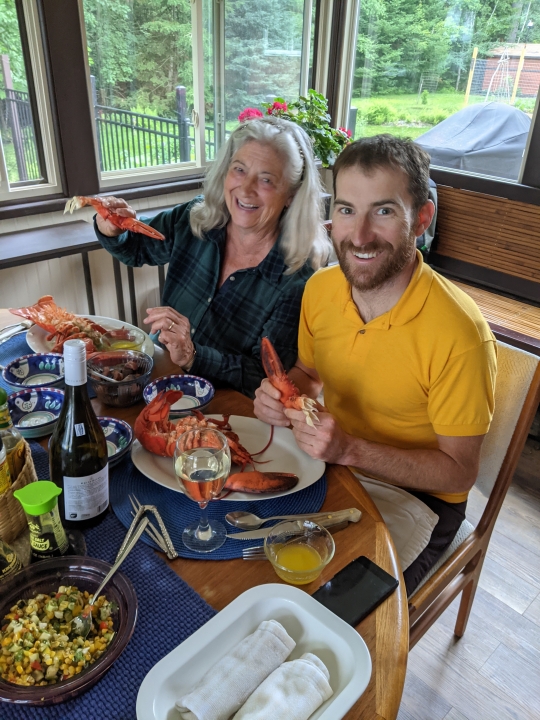
My flight wasn’t for a few days, so I had some time to spend exploring Acadia National Park. I visited twice, once on a cloudy day and once when it was sunny. Acadia is on an island, though much of the island is private land, and the borders to the park are screwy; it’s hard to tell exactly when you enter and leave, and you can do both multiple times by moving in a straight line.
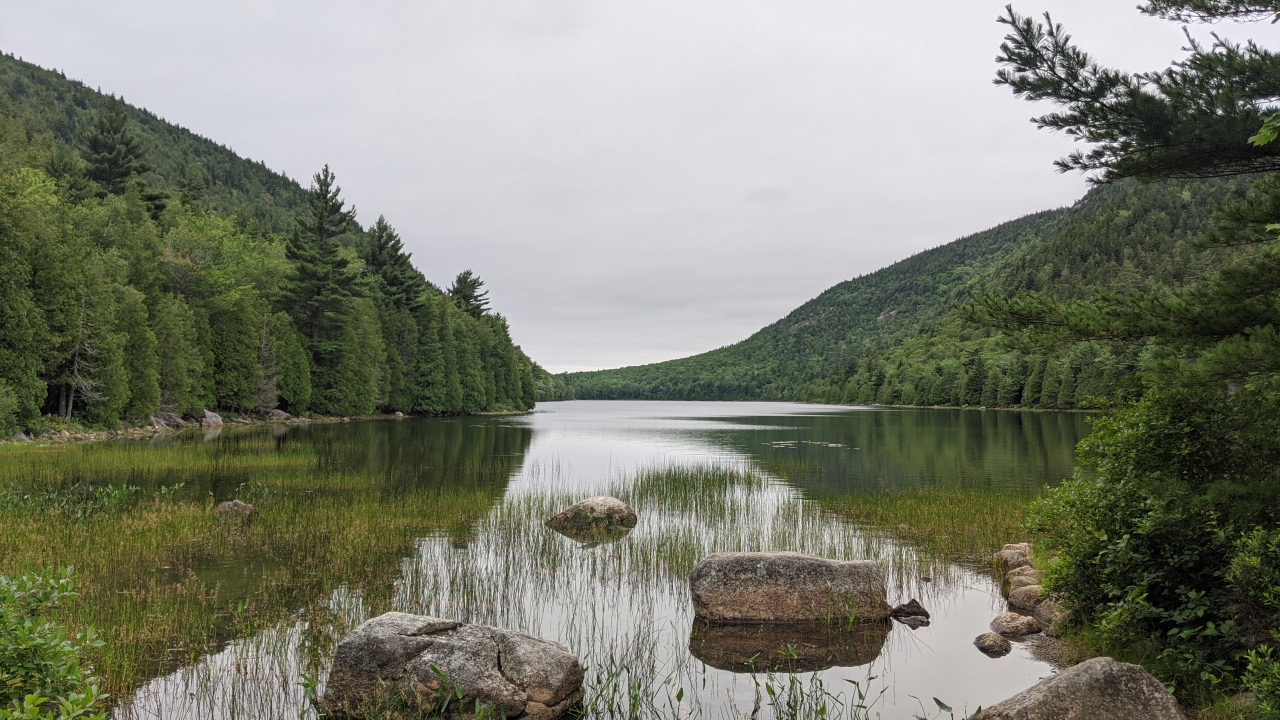
My favorite feature of the park was the carriage roads; old gravel roads that have since been repurposed as hiking/biking trails. You can get nearly anywhere in the park on them, and much like the Katy Trail and the GAP, they’re wooded, shaded, and quiet. On the cloudy day, I had the carriage roads almost entirely to myself, and even on the sunny day, they weren’t nearly as busy as the auto roads.
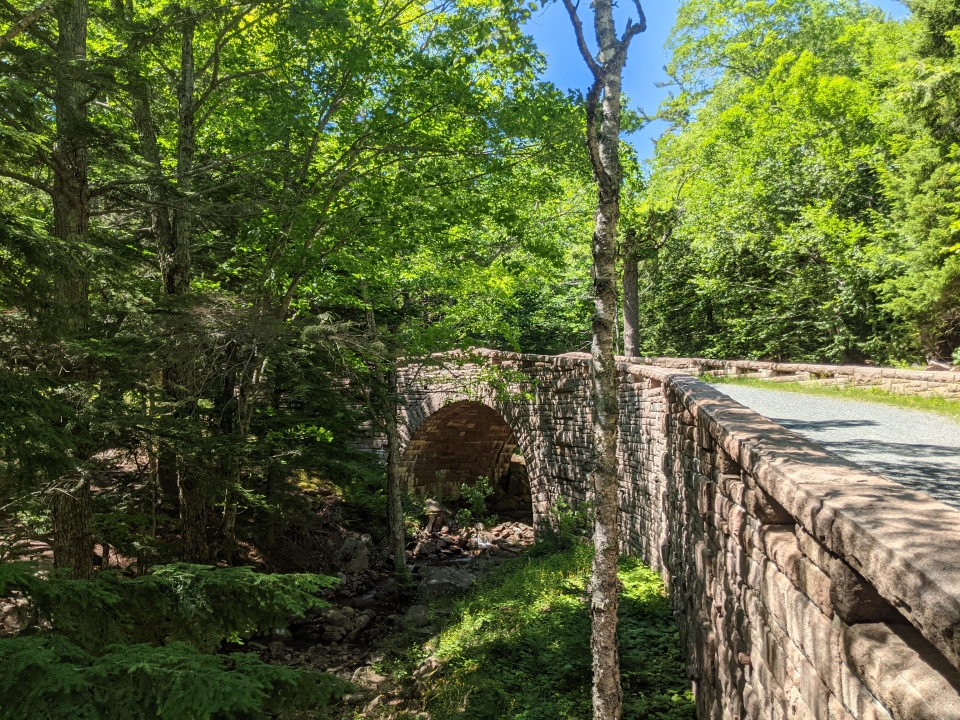
By comparison, when riding on any of the roads in the park, you’re constantly surrounded by thick, loud traffic. At times, there were cars parked on the side of the road (where parking isn't allowed), stretching literally for miles, since the parking lots aren’t adequate for the amount of car-bound visitors the park gets. Since there isn’t enough flat land to park on the side of the road, the cars are halfway into a lane, which effectively removes a lane from the road and makes the situation worse.
In some cases, the best way to improve the traffic situation is to worsen facilities for cars. When the problem is “There are too many cars,” the solution probably isn’t “Make it easier to drive even more cars.” If we discourage auto traffic, more people will use public or alternative transportation, or they’ll simply cut down on the number of trips they take. Simply adding another lane is a linear solution for an exponential problem.
Cadillac Mountain is the highest point in the park, and one of its signature hikes. There’s also a road that takes you directly to the summit. Driving up is so popular, you have to make a reservation to drive your car on a road, and even with this system, it’s bumper-to-bumper traffic, only moving at roughly the speed of a hiker.
I understand that hiking and biking aren’t for everyone, and elderly and handicapped people like natural scenery too. But if you can’t be bothered to get out of the car and go for a walk, what are you doing in a national park? Moments like this are when I realize we’re going to lose the fight against climate change. Even in the world’s best places to walk or ride a bike, most people will instead choose to drive a car, simply because they can.
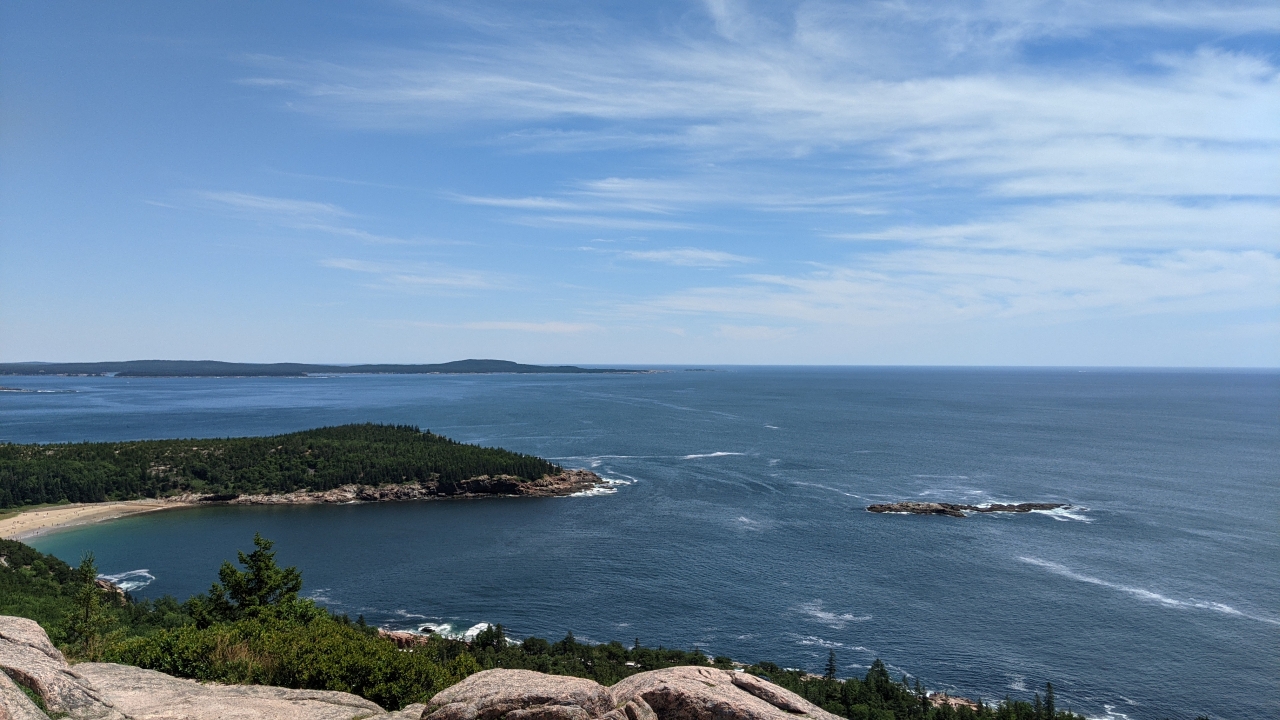
Acadia’s scenery isn’t sweeping and epic like the west, but rather is charming and inviting. It reminded me of a greener version of Texas Hill Country.
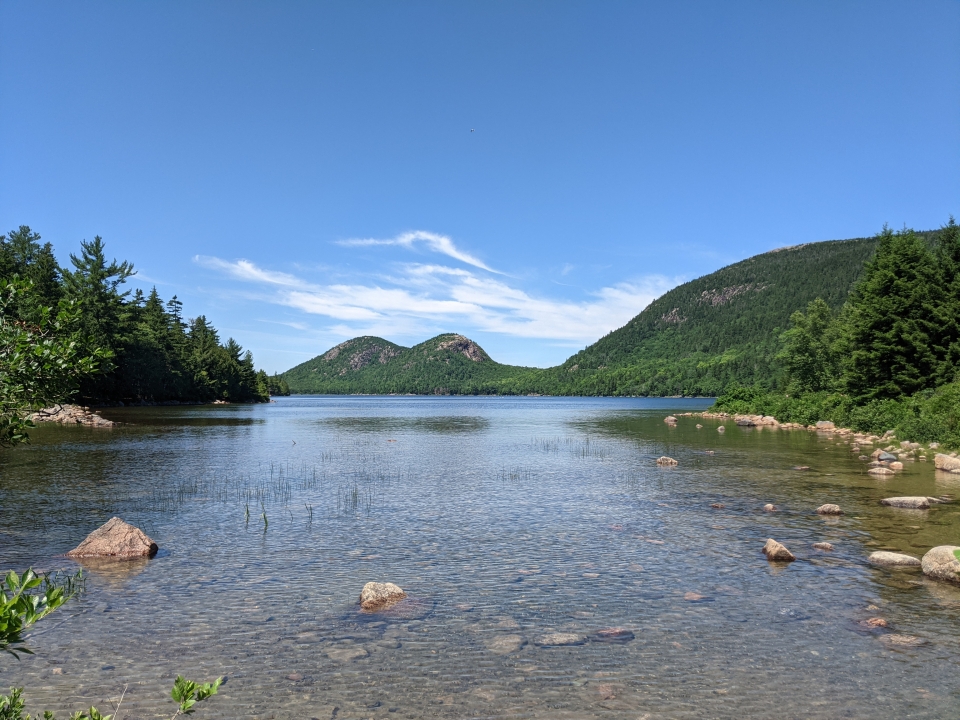
Naturally, I had to dip Valeria’s wheel in the Atlantic, four years after this ride had begun at Land’s End Park in San Francisco.
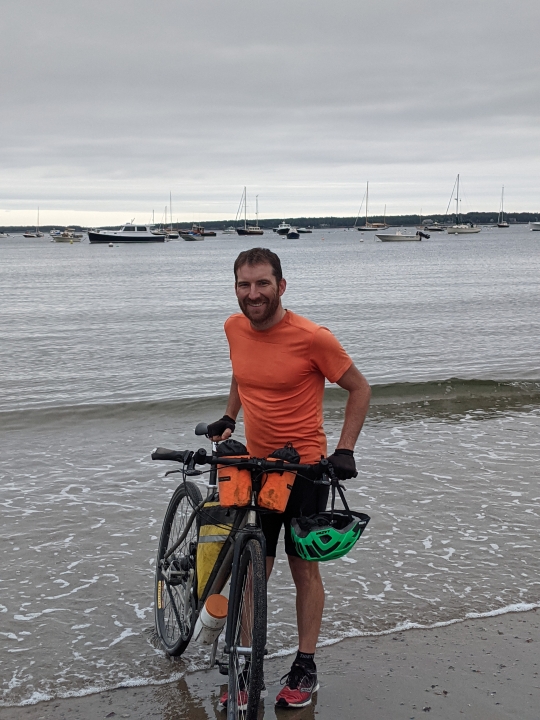
To be concluded...
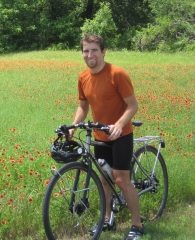


 June
June

